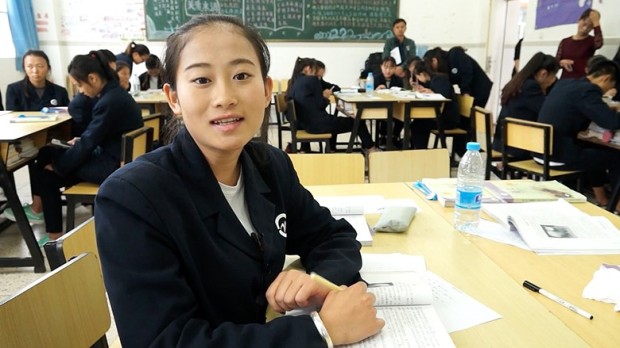 China to make high school compulsory
China to make high school compulsory
Move expected to raise enrollment ratio, support children in less developed areas. The country is to extend the current nine-year compulsory education to encompass high school students nationwide by 2020, according to a guideline recently released by the Ministry of Education and other three ministries. The Guideline for Popularizing High School Education (2017-20), released early this month, aims to raise the gross enrolment ratio for high schools to above 90 percent on average nationwide with rates in central and western China substantially improved. Last year, China’s overall gross enrollment ratio was 87.5 percent for high schools, meaning a rise of 2.5 percentage points in the next four years, according to the guideline. The ratio is a statistical measurement to show the number of enrolled students to those who qualify for certain grades, ranging from primary school to middle and high school periods. Over the past few decades, China required children to attend primary and middle schools, while high school was not obligatory. Meanwhile, the document said the country is set to achieve a more reasonable structure between high school and secondary occupational education while enrolling a larger number of children into both schools. In addition, these schools will enjoy more funds and better facilities to significantly improve the quality of education. High school is a special and important stage for most Chinese students, which links the nine-year compulsory education and college time they will spend before getting a job. That’s why high school has been considered a key period to improve quality of the nation’s human resources. The guideline was in line with China’s 13th Five-Year Plan (2016-20), which pledges to popularize high school education by the end of this period. The new document is also to bridge regional disparity of high school education as the central and western regions lag far behind the east…
Variation in Education Costs and Future Earnings Future earnings differ substantially across college majors, but so do instructional costs. They don’t always line up…
America’s Missing Workers Are Primarily Middle Educated
Social inclusion essential for eradicating poverty
How Dubai Cares is getting children into school
800 million students will be unemployed by 2030: Here’s why
Asians spend seven times as much as Americans on tutoring to give their kids an edge
Evidence of Private Wage Returns to Schooling in Indonesia from Labor Force Surveys
Returns to Education Using a Sample of Twins: Evidence from Japan
Escuela Nueva is 30 years old: Bringing a student-centered participatory pedagogy to scale in Colombia
Returns to Education During and After the Economic Crisis: Evidence from Latvia 2006–2012
Benefits to elite schools and the expected returns to education: Evidence from Mexico City
Flourish or Fail? The Risky Reward of Elite High School Admission in Mexico City
Impact of Universal Primary Education Policy on Out of School Children in Uganda
High School Track Choice and Liquidity Constraints: Evidence from Urban Mexico
The impact of an accountability intervention with diagnostic feedback: Evidence from Mexico
